Moose Feeding Sign with Video
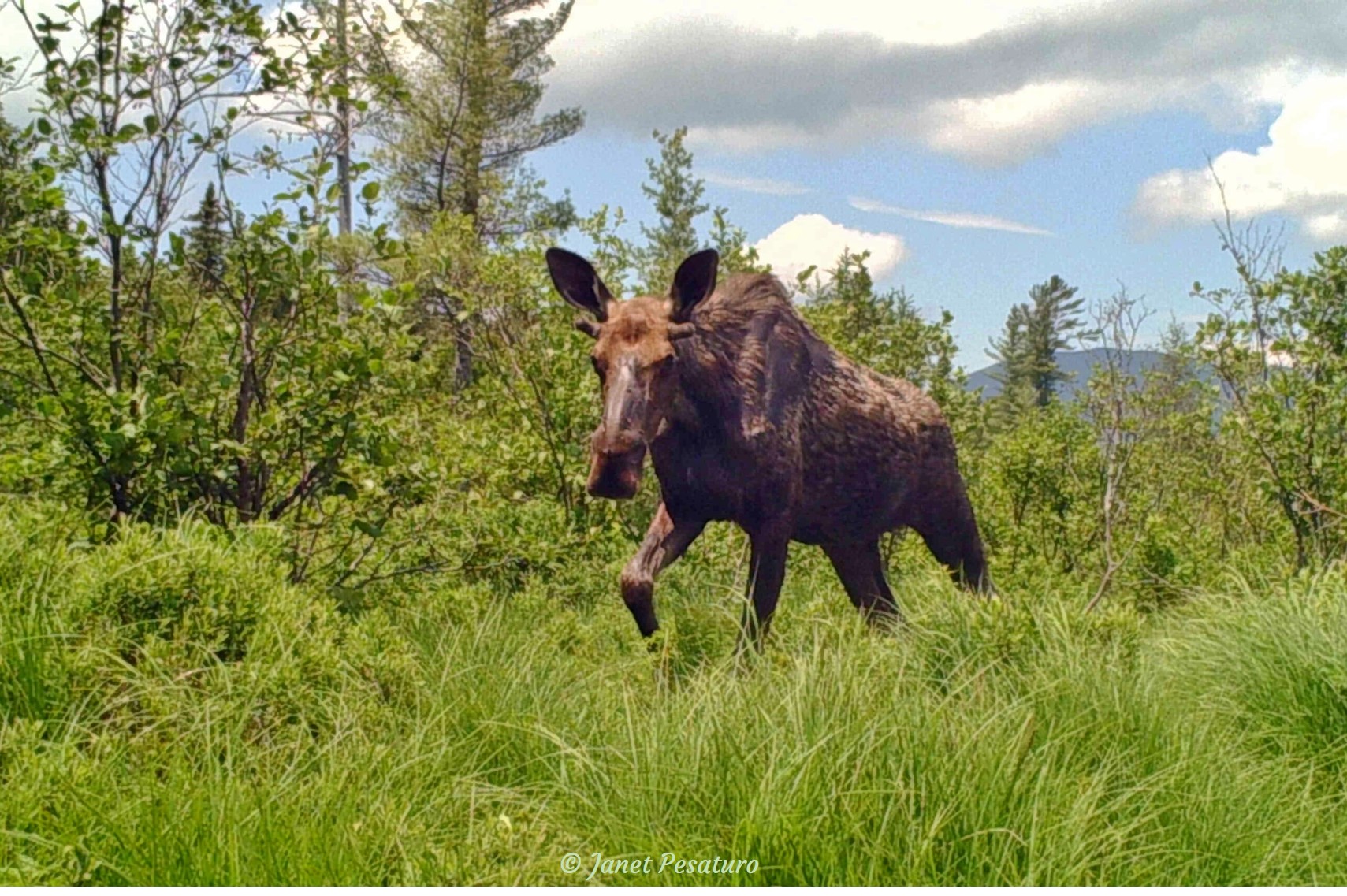
Moose, Alces alces, consume a wide variety of plants but moose feeding sign on woody plants is most easily identified. During the warmer months they take catkins, buds, and leaves and in winter they consume bark, twigs, and buds from trees and shrubs. Three main types of feeding sign are described below.
1. Browse sign
Like elk and deer, moose have lower incisors but not upper incisors, so they cannot make clean cuts through twigs. They bite off twigs by tearing them between their lower incisors and the upper hard palate, leaving ragged ends. Since other ungulates create this same feeding sign (this is also discussed in my post on elk), consider the height of the sign. Moose can reach much higher than deer, for example, but beware that snow pack allows smaller animals to reach higher than expected. Here is an example of browse sign on red maple in Massachusetts that was about 5 feet above ground, and created during a winter of little snow fall. Both deer and moose will eat red maple, but deer could not have reached that high in the absence of snow pack.
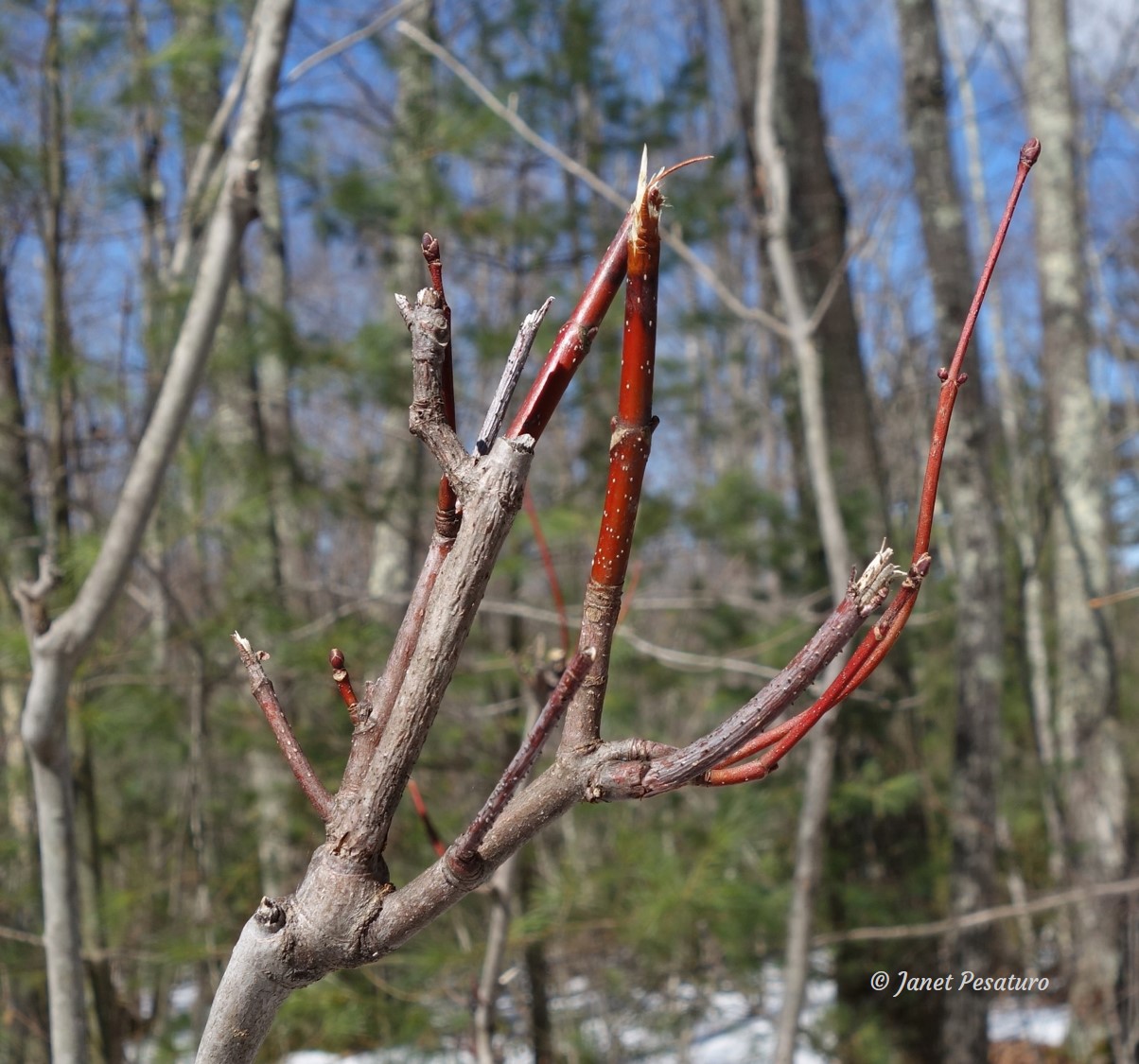
2. Broken branches and saplings
Moose break branches and saplings to access tender leaves or buds that are otherwise beyond reach. Where moose density is high, there may be an abundance of broken branches and saplings. People attending my tracking walks often ask how moose break them. They use two different methods and sometimes we can’t tell for sure which method was used. They may grab the branch or sapling with the mouth and pull till it breaks. Or they may straddle and walk over a sapling, bending it to reach the desired fare, and this sometimes causes the sapling to snap. Recently I was lucky enough to get a trail camera video of a moose breaking a sapling by pulling it down with its mouth. So you don’t have to take my word on the moose’s method – just watch the video! (I apologize for that branch sitting in front of the camera – it fell long after set up.)
As you interpret this sign in the field, keep in mind that bears also break branches and saplings to reach mast. It may be challenging to distinguish moose from bear sign, but consider the following:
- Moose are often after leaves, twigs, buds, or catkins, so the broken branch will usually bear sign of browsed twigs or stripped leaves or catkins.
- Moose may leave no other sign if it has broken a sapling by walking over it (though you may find a few hairs if you look carefully). It may leave teeth marks beyond the break if it has pulled it down with its mouth. Notice in the video that the moose’s grip on the broken end of the sapling was about a foot beyond the break. That’s a good place to look for teeth marks.
- Bears break branches and saplings to either harvest fruit, such as apples or serviceberries, or to scent mark. Consider the tree species and the food it offers. Also look for signs of scent marking. A bear might do much more to a sapling used for scent marking, than simply snap it. Bear bite marks may be at any level, from just above the ground to way up high. Bears sometimes climb trees before breaking branches, so their breaks can be much higher than a moose’s break.
- As always, look for associated sign such as tracks, scat, and hair.
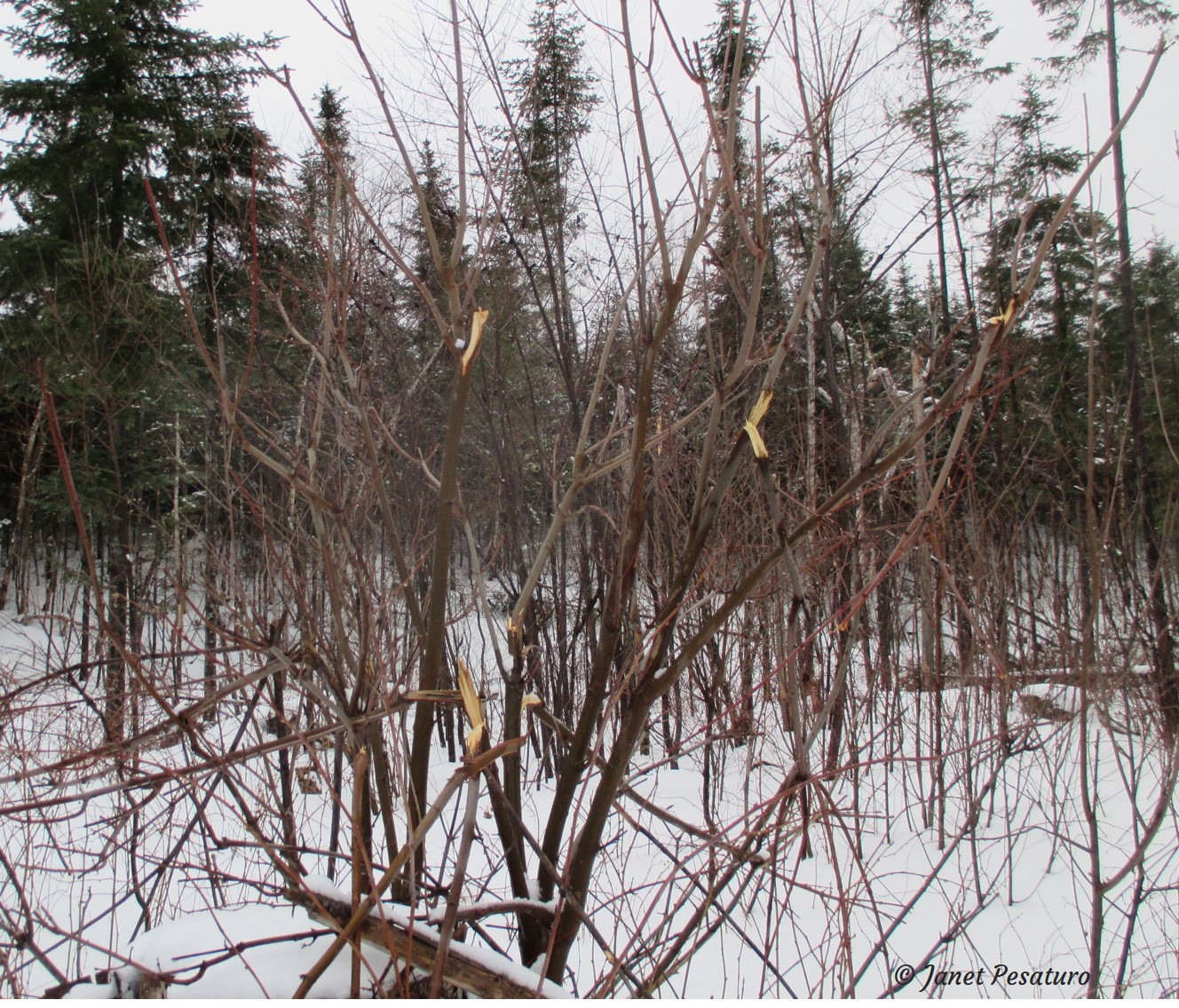
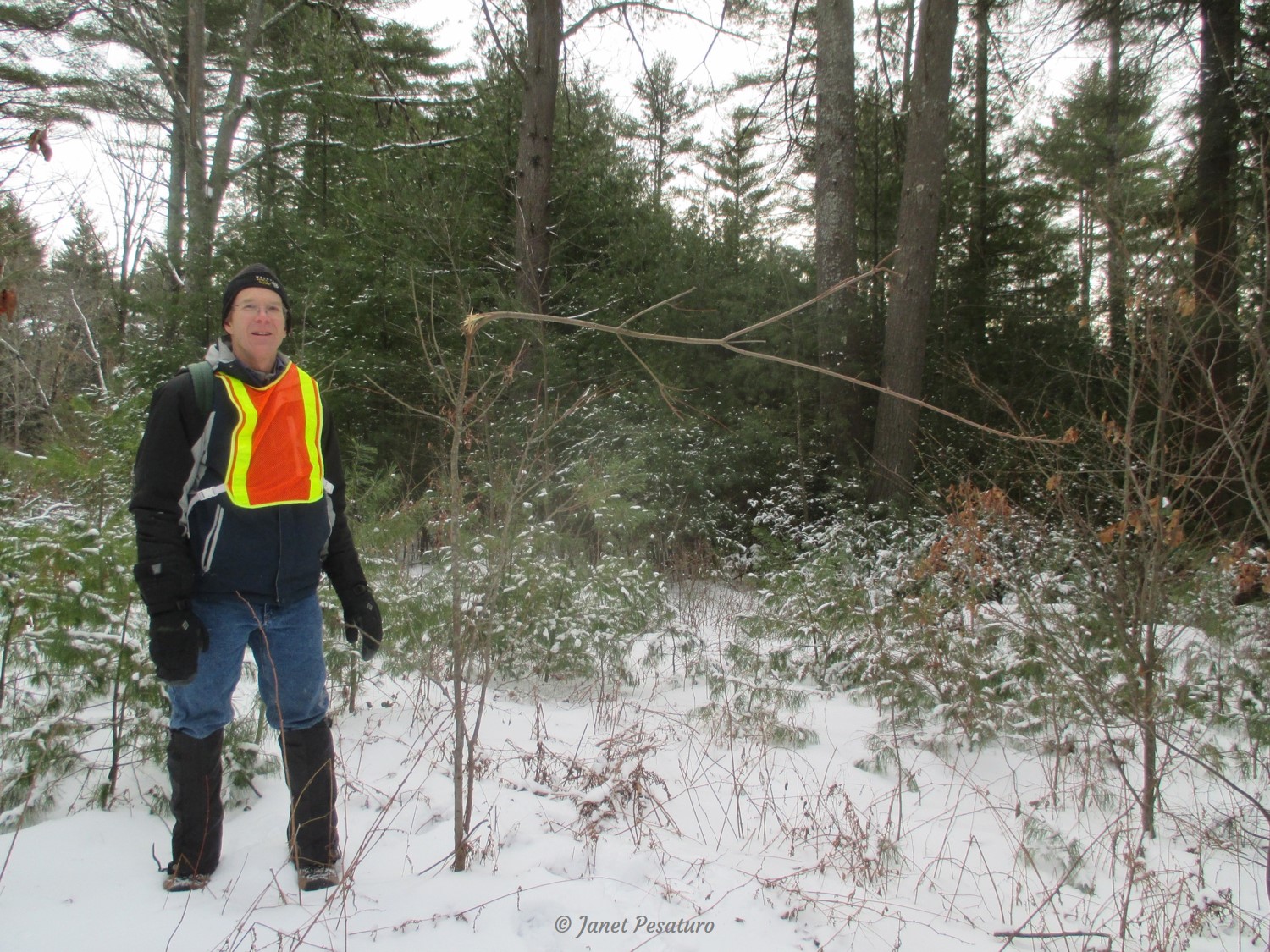
3. Incisor scraping
Moose create this sign in the same way that deer and elk do, by scraping upwards with their lower incisors to harvest the cambium under thin, young bark. Sometimes this sign is called “barking”. In the Northeast, look for it on striped maple, red maple, and aspen. Freshly scraped bark will be yellowish, but it becomes gray and scarred as the years pass. I do not yet have a video of a moose creating this sign but I just recently stationed one in what I think is a likely spot for incisor scraping this winter. I chose an area with a lot of young red maple, where moose scat and browse are abundant, and with sign of incisor scraping from last winter. We’ll see how that pans out.
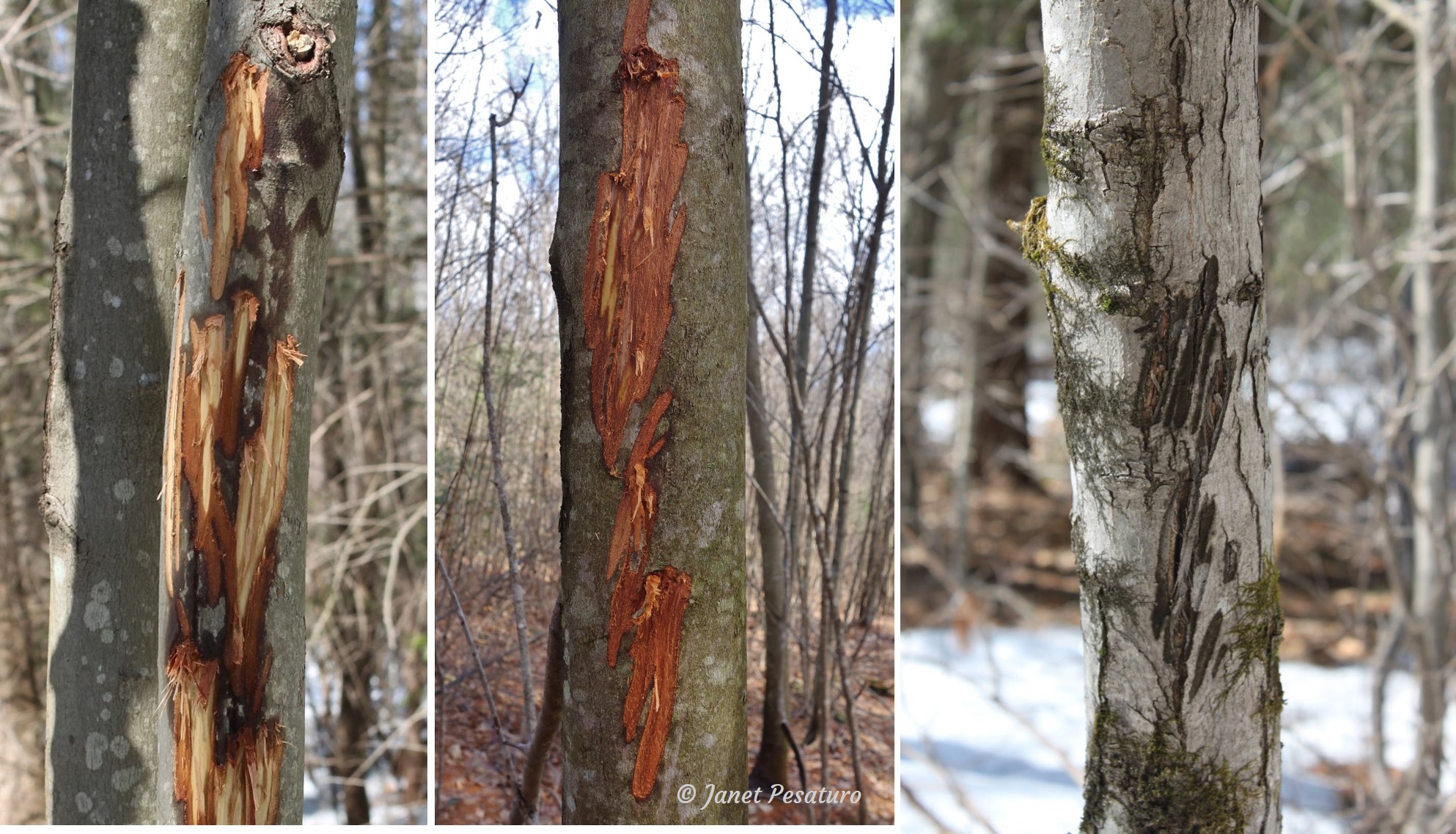
Related Posts
Elk Tracks and Sign
Moose’s Summer Diet
Sources and Further Reading
Elbroch, M. Mammal Tracks & Sign: A Guide to North American Species. Mechanicsburg, PA: Stackpole Books, 2003.
Basic information about Moose

What does tree look like when moose or deer rub velvet off new antlers?
Hi Debbie, you can see an example of a moose rub on page 215 in my book. In that example, the tree has low branches. When moose rub trees with no low branches, the rub looks just like a deer rub, but it’s larger and higher up in the tree.
Pingback:Moose Rut Pit Search - Winterberry Wildlife